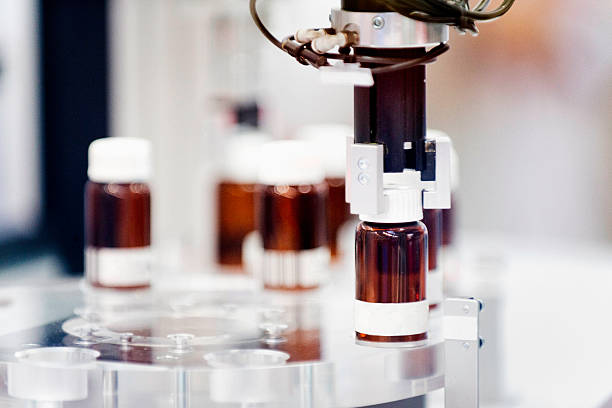Haben Sie sich jemals gefragt, warum manche Lebensmittel sofort Käufer anziehen, während andere im Regal übersehen werden?? Das Geheimnis liegt oft in der Verpackung. Das richtige Material schützt die Frische, erfüllt regulatorische Standards, steigert die Markenattraktivität, und reduziert sogar die Kosten in Ihrer gesamten Lieferkette. In diesem Ratgeber, Wir führen Sie durch die gängigsten Lebensmittelverpackungsmaterialien und geben Ihnen wichtige Auswahltipps, um Ihnen bei der Entwicklung einer Verpackung zu helfen, die sowohl leistungsstark als auch marktreif ist.
Was ist Lebensmittelverpackung??
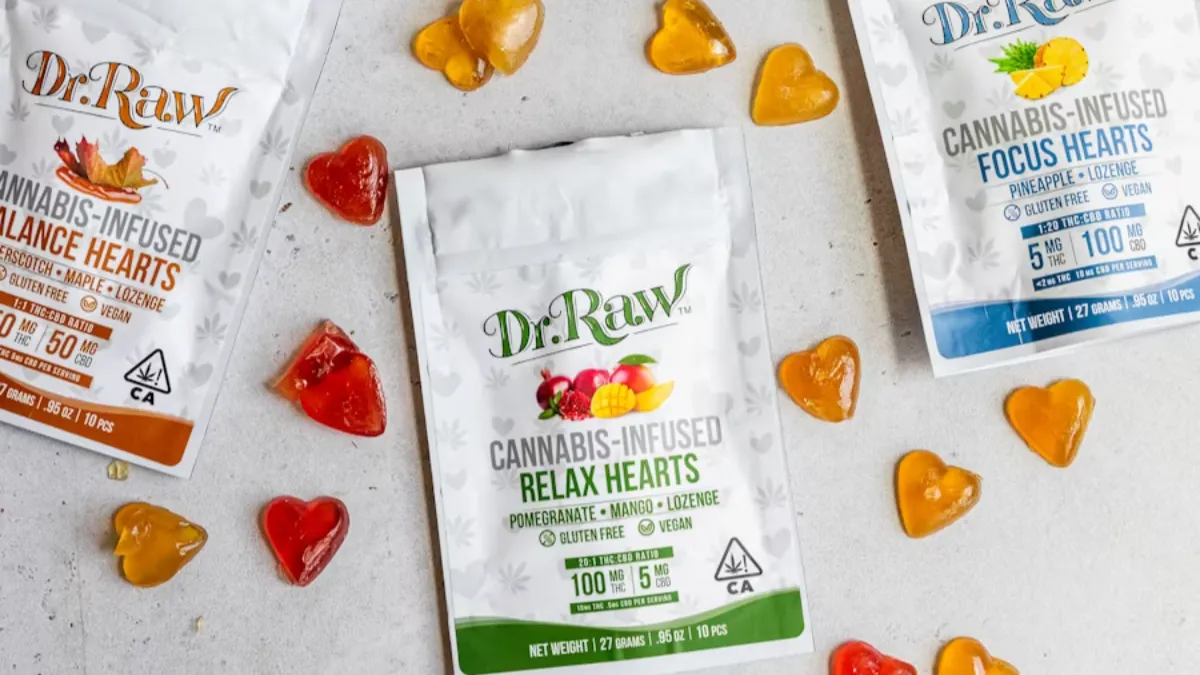
Lebensmittelverpackung bezieht sich auf die zur Eindämmung verwendeten Materialien und Methoden, schützen, und Lebensmittel von der Produktion bis zum Verzehr konservieren. Sein Hauptzweck besteht darin, die Sicherheit der Produkte zu gewährleisten, Frische bewahren, und verhindern eine Kontamination während der Lagerung, Transport, und Anzeige. Zusamenfassend, Dies macht die Lebensmittelverteilung in großem Maßstab möglich.
Wenn Sie in der Lebensmittelproduktion oder im Einzelhandel arbeiten, Sie wissen, wie stark sich die Verpackung auf die Produktqualität auswirkt. Ohne den richtigen Barriereschutz, Feuchtigkeit, Sauerstoff, oder Licht kann den Geschmack und die Textur schnell beeinträchtigen. Ein einfaches Beispiel: Kekse ohne luftdichte Verpackung verlieren innerhalb von Stunden ihre Knusprigkeit, während vakuumversiegeltes Fleisch tagelang frisch bleiben kann.
Jenseits des Schutzes, Verpackungen verbessern auch die Rückverfolgbarkeit und Effizienz in modernen Lieferketten. Etiketten, Barcodes, und QR-Codes ermöglichen Ihnen die Verfolgung Ihrer Produkte, Lagerbestände verwalten, und entsprechen der ISO 22000 oder HACCP-Lebensmittelsicherheitsstandards. Gleichzeitig, Verpackungen dienen als Kommunikationsmittel. Es zeigt Ihren Kunden, was drin ist, wie man es benutzt, und warum es sicher ist. Für Sie als Hersteller oder Händler, Klare Kennzeichnung und starke Versiegelung spiegeln direkt Ihre Produktqualität wider und stärken die Zuverlässigkeit Ihrer Marke.
Am häufigsten verwendete Materialien für Lebensmittelverpackungen
Plastikverpackung
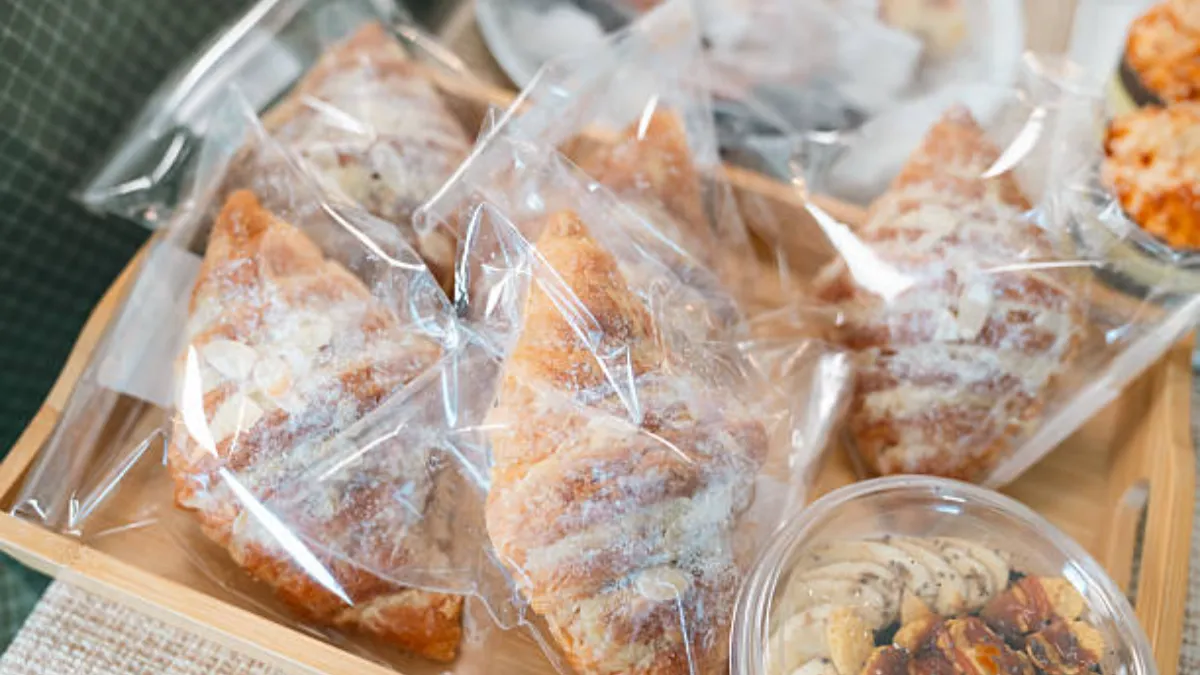
Kunststoff bleibt eines der vielseitigsten und am häufigsten verwendeten Materialien in der Lebensmittelverpackungsindustrie. Weil es leicht ist, flexibel, und kostengünstig, Sie verwenden oder sehen es wahrscheinlich jeden Tag, von Getränkeflaschen bis hin zu Snackbeuteln und Tüten für gefrorene Lebensmittel.
Gängige Kunststoffarten:
- HAUSTIER (Polyethylenterephthalat): Wird für Getränkeflaschen und Salatbehälter verwendet. Es ist klar, dauerhaft, und recycelbar, Dies ist ideal, wenn Ihr Produkt frisch und sichtbar aussehen soll.
- SPORT (Polyethylen): Gefunden in Milchbeuteln, Brotbeutel, und Tiefkühlkostverpackungen. Es bietet einen starken Feuchtigkeitsschutz, ist aber nicht so hitzebeständig.
- PP (Polypropylen): Geeignet für mikrowellengeeignete und heiß befüllbare Behälter, da es höheren Temperaturen standhält. Jedoch, es wird bei niedrigen Temperaturen spröde.
- PVC (Polyvinylchlorid): Wird häufig in Frischhaltefolien und Schrumpffolien verwendet, obwohl viele Hersteller es mittlerweile durch sicherere ersetzen, umweltfreundlichere Materialien.
Vorteile: Kunststoff ist leicht, dauerhaft, und bildet eine starke Versiegelung, um Verunreinigungen zu verhindern und die Haltbarkeit zu verlängern.
Nachteile: Es ist nicht biologisch abbaubar und kann zur Umweltverschmutzung beitragen, wenn es nicht ordnungsgemäß recycelt wird. Aus diesem Grund greifen immer mehr Unternehmen auf recycelte oder biobasierte Alternativen zurück, die die Qualität gewährleisten und gleichzeitig den Abfall reduzieren.
Papier- und Pappverpackung
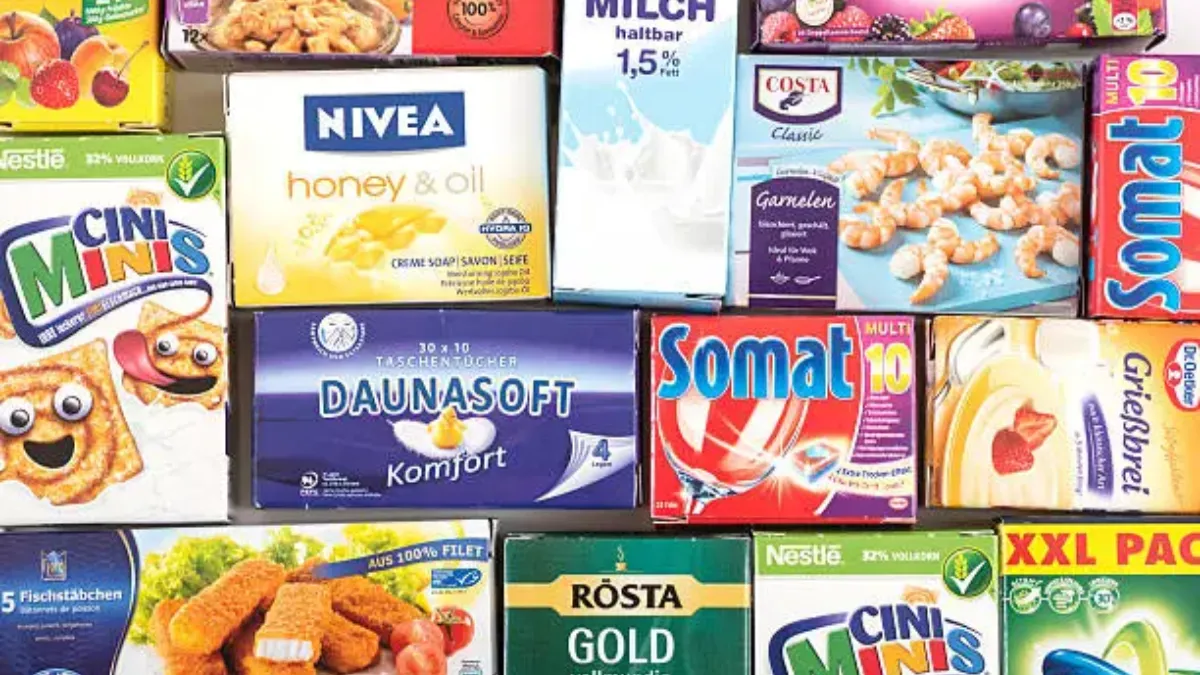
Papierbasierte Materialien bleiben eine klassische Wahl für trockene Lebensmittel wie Cerealien, Mehl, Und Snacks. Sie sind leicht, einfach zu bedrucken, und ansprechend für umweltbewusste Verbraucher.
Hauptmerkmale:
- Einfach zu drucken, Damit eignet es sich perfekt zum Branding und Etikettieren.
- Atmungsaktiv, Dies hilft bei Lebensmitteln, die Luftzirkulation benötigen.
- Kann zur Verbesserung der Wasser- und Fettbeständigkeit beschichtet oder laminiert werden.
Wenn Sie mit Produkten arbeiten, die Flüssigkeiten oder Öle enthalten, Normalpapier allein reicht nicht aus. Sie können es mit anderen Materialien wie Aluminium oder biologisch abbaubaren Folien kombinieren, um mehrschichtige Verpackungen herzustellen, das Schutz und Nachhaltigkeit in Einklang bringt.
Vorteile: Verlängerbar, recycelbar, erschwinglich, und einfach anzupassen.
Nachteile: Begrenzte Barriereeigenschaften gegen Feuchtigkeit und Sauerstoff, und Beschichtungen können die Recyclingfähigkeit beeinträchtigen.
Glasverpackung
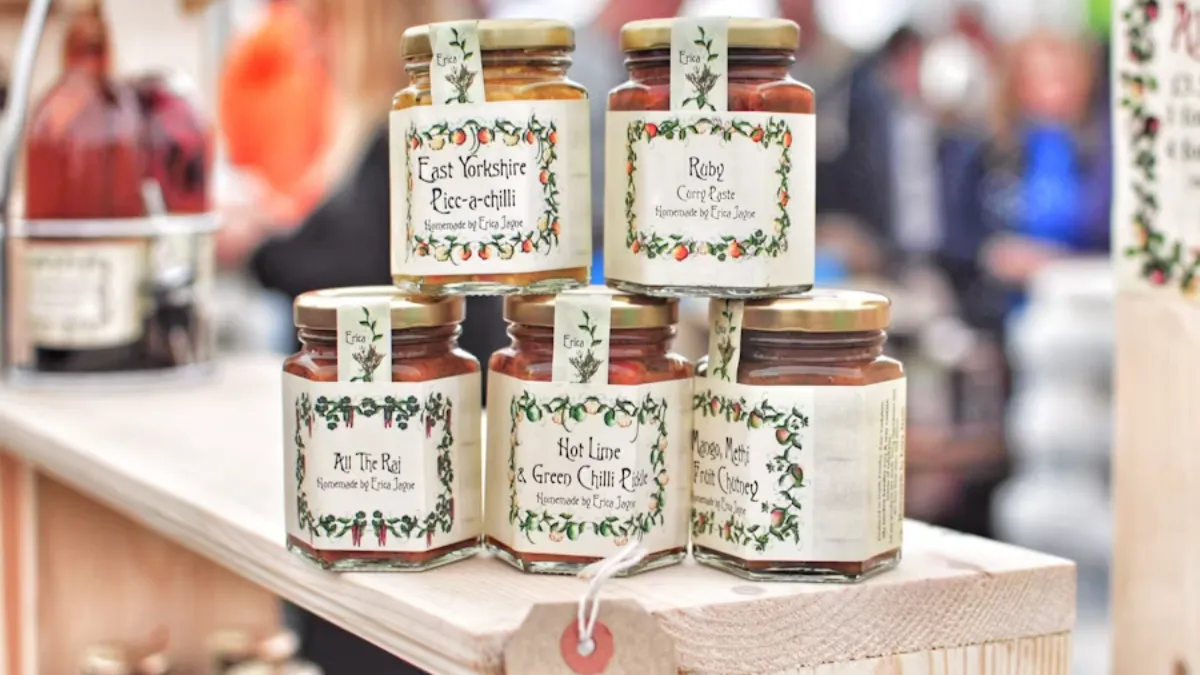
Glas ist in der Lebensmittelindustrie nach wie vor ein Favorit, da es den Geschmack bewahrt, Aroma, und Frische ohne chemische Wechselwirkung. Man sieht es oft für Soßen, Marmeladen, Gurken, und Premiumgetränke.
Vorteile:
- Vollständig recycelbar und unbegrenzt wiederverwendbar.
- Hervorragender Schutz gegen Luft, Feuchtigkeit, und Gerüche.
- Verleiht Produkten ein sauberes Aussehen, Premium-Look, der Ihr Markenimage stärken kann.
Nachteile:
- Schwer und zerbrechlich, was die Transportkosten und das Bruchrisiko erhöht.
- Die Herstellung erfordert im Vergleich zu Papier oder Kunststoff mehr Energie.
Wenn Ihre Marke auf Qualität und Nachhaltigkeit setzt, Glasverpackungen sind eine gute Wahl. Verbraucher assoziieren Glas oft mit Authentizität und Vertrauen. Diese Eigenschaften können dazu beitragen, dass Ihre Produkte hervorstechen.
Metallverpackung
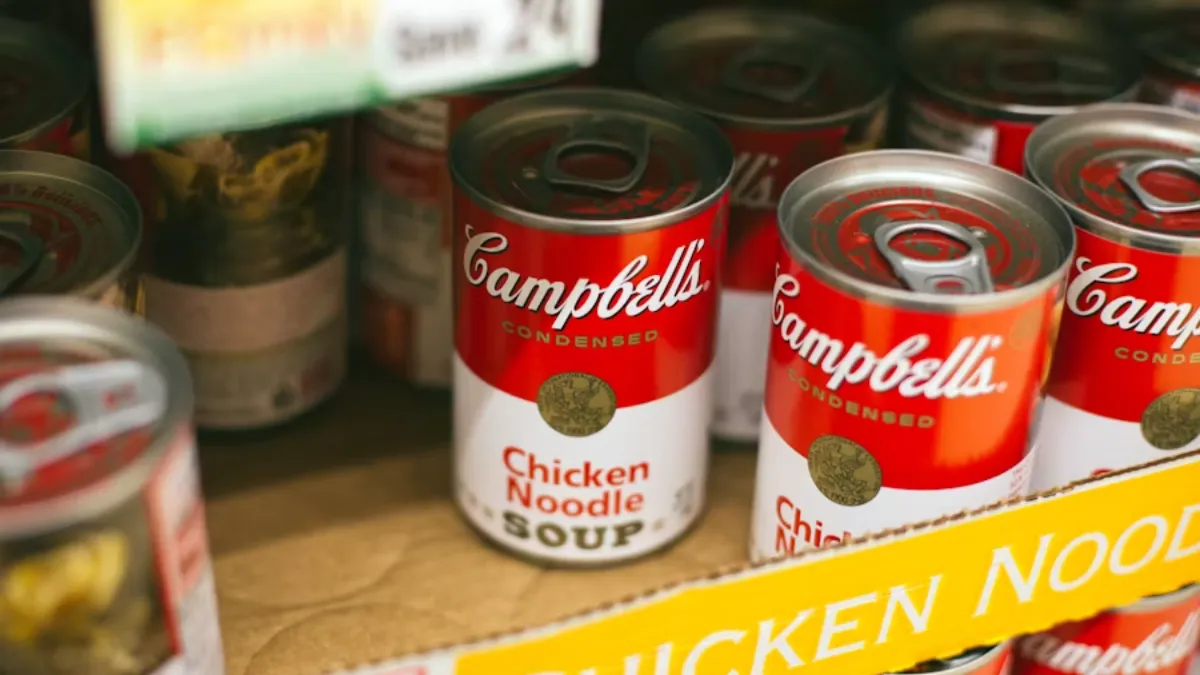
Metalle wie Aluminium und Weißblech sind seit Jahrzehnten für die Lebensmittelkonservierung unverzichtbar. Sie werden häufig für Konserven verwendet, Getränke, Und Tierfutter wegen ihrer Haltbarkeit und ihres hervorragenden Schutzes.
Hauptvorteile:
- Starke Barriere gegen Licht, Luft, und Feuchtigkeit.
- Verlängert die Haltbarkeit, Dies ist besonders nützlich, wenn Sie Lebensmittel exportieren oder langfristig lagern.
- Hochgradig recycelbar und energieeffizient bei Wiederverwendung.
Nachteile:
- Schwerer als Plastik, steigende Logistikkosten.
- Bei Lebensmitteln mit kurzer Haltbarkeit ist die Herstellung teurer.
Trotz dieser Nachteile, Metallverpackungen bleiben eine zuverlässige und nachhaltige Option, insbesondere wenn Produktsicherheit und Langlebigkeit oberste Priorität haben.
Biologisch abbaubare und kompostierbare Materialien
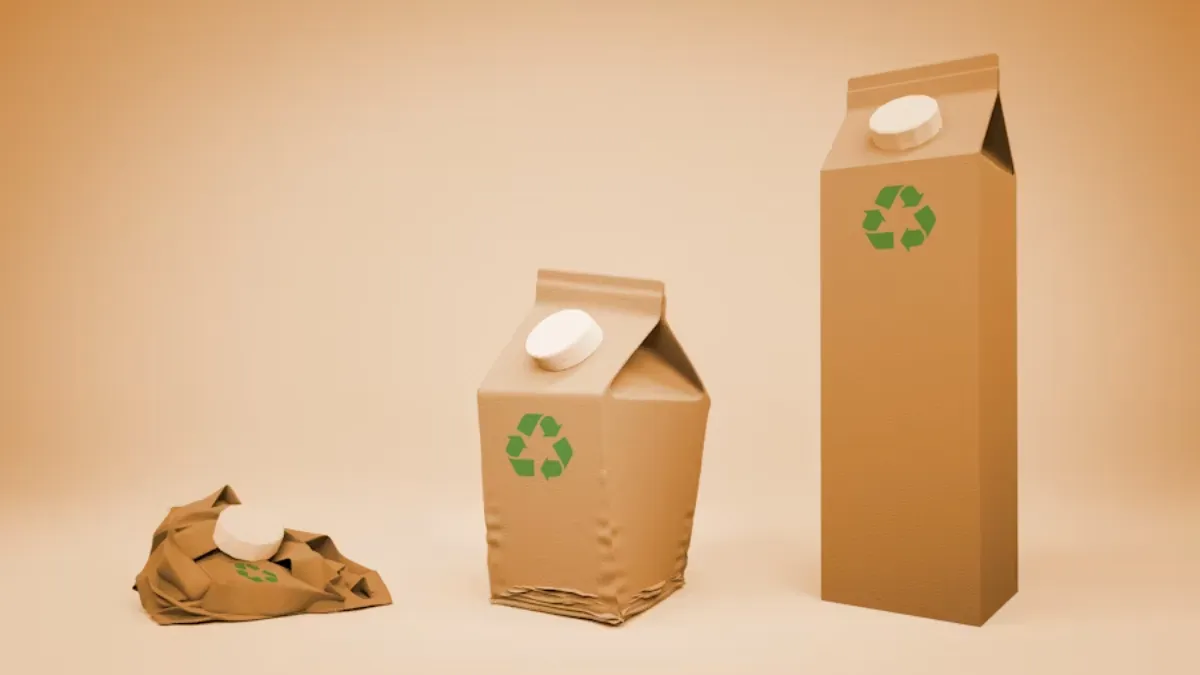
Die wachsende Nachfrage nach Nachhaltigkeit hat die Verpackungsindustrie dazu veranlasst, sich biologisch abbaubaren und kompostierbaren Materialien zuzuwenden. Sie sehen Optionen wie PLA (Polymilchsäure), Zellulosefolien, und Kunststoffe auf Stärkebasis werden immer beliebter.
Vorteile:
- Unter Kompostierungsbedingungen auf natürliche Weise zersetzen, Reduzierung von Deponieabfällen.
- Geringerer CO2-Fußabdruck im Vergleich zu herkömmlichen Kunststoffen.
- Verbessern Sie Ihr Markenimage bei umweltbewussten Kunden.
Nachteile:
- Höhere Kosten im Vergleich zu Standardkunststoffen.
- Für eine ordnungsgemäße Zersetzung sind bestimmte Kompostierungsbedingungen erforderlich.
- Begrenzte Hitzebeständigkeit, Dadurch sind sie für warme Speisen weniger geeignet.
Wenn Sie eine umweltfreundlichere Marke aufbauen möchten, Die Erforschung biologisch abbaubarer Verpackungen ist ein kluger Schritt. Die Technologie hinter diesen Materialien verbessert sich schnell, hilft Ihnen, die Leistung auszugleichen, Nachhaltigkeit, und Kosten.
So wählen Sie das richtige Lebensmittelverpackungsmaterial aus
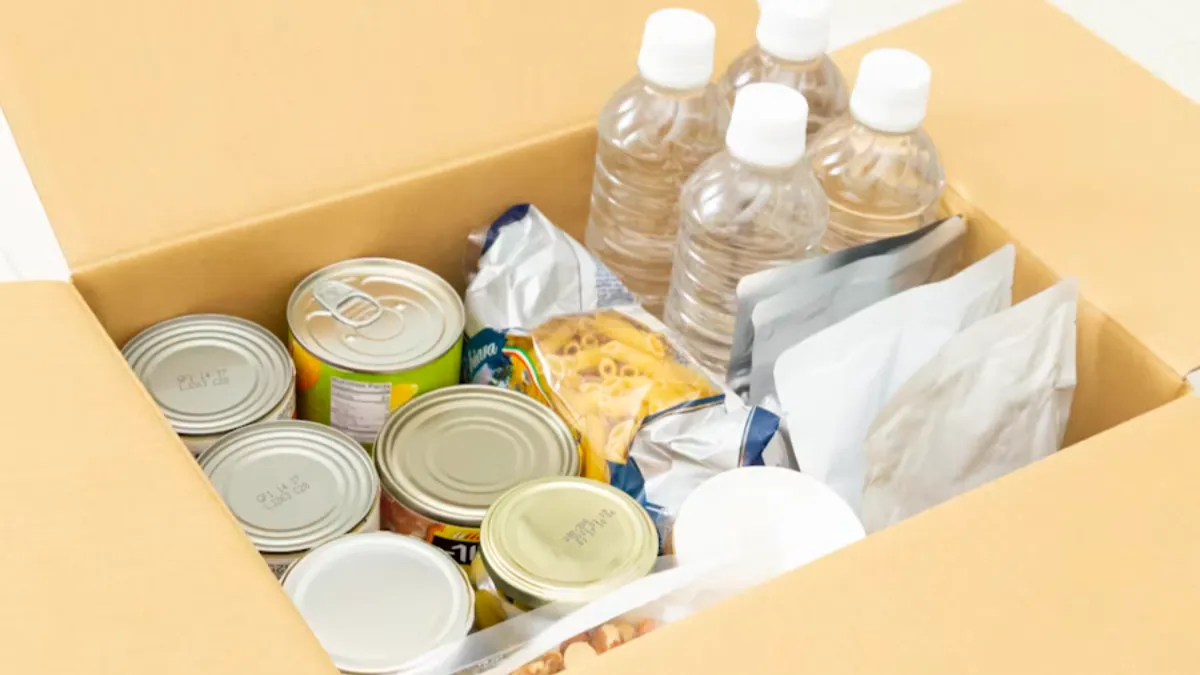
Verstehen Sie die Natur des Essens
Stellen Sie zunächst eine einfache Frage: Was verpacke ich??
Unterschiedliche Lebensmittel haben sehr unterschiedliche Bedürfnisse. Zum Beispiel:
- Trockenfutter B. Müsli oder Nudeln, benötigen Materialien, die eine gewisse Luftzirkulation ermöglichen, aber Feuchtigkeit fernhalten – Pappe oder laminiertes Papier eignen sich gut.
- Feuchte oder ölige Lebensmittel wie Soßen, Käse, oder Fertiggerichte erfordern starke Feuchtigkeitsbarrieren, wie Kunststofflaminate oder metallisierte Folien.
- Tiefkühlprodukte Sie benötigen eine Verpackung, die niedrigen Temperaturen standhält und Risse verhindert, wie Polyethylen (SPORT).
Je besser Sie die physikalischen und chemischen Eigenschaften Ihres Produkts verstehen, desto einfacher wird es, ein Material zu finden, das sicher und ansprechend bleibt.
Berücksichtigen Sie die Lager- und Transportbedingungen
Überlegen Sie, wo und wie die Lebensmittel gelagert und transportiert werden. Wenn Ihr Produkt weite Strecken zurücklegt oder schwankenden Temperaturen ausgesetzt ist, Haltbarkeit und Barriereschutz sind der Schlüssel.
- Für Fernexporte: Wählen Sie Materialien wie Metall oder mehrschichtige Kunststoffe, die Druck standhalten und vor Sauerstoff und Licht schützen.
- Für gekühlte oder gefrorene Lebensmittel: Verwenden Sie flexible Folien, die auch bei niedrigen Temperaturen ihre Integrität bewahren.
- Für den lokalen Vertrieb: Papier und biologisch abbaubare Optionen können geeignet sein, wenn die Haltbarkeit des Produkts kürzer ist.
Eine gute Faustregel? Ihre Verpackung sollte am Endverkaufsort genauso gut funktionieren, wie wenn sie das Werk verlässt.
Richten Sie sich an Ihrer Marke und Ihren Nachhaltigkeitszielen aus
Wenn Sie die Verpackung wählen, Denken Sie über Schutz und Logistik hinaus. Der Stoff, Textur, und schauen Sie, alle erzählen eine Geschichte über Ihre Marke. Eine klare Glasflasche, Zum Beispiel, vermittelt Reinheit und Qualität, während Kraftpapier einen natürlichen und umweltbewussten Eindruck vermittelt. Diese visuellen und taktilen Hinweise beeinflussen, wie Kunden Ihr Produkt wahrnehmen, lange bevor sie es überhaupt probieren.
Heutzutage achten Verbraucher genau darauf, wie nachhaltig eine Verpackung ist. Immer mehr Unternehmen steigen auf recycelbare Kunststoffe um, kompostierbare Folien, oder biobasierte Materialien aus Maisstärke oder Zuckerrohr. Wenn Sie nach umweltfreundlicheren Lösungen suchen, aber dennoch die Kosten überschaubar halten müssen, Versuchen Sie, Materialien zu kombinieren. Mit einer dünnen, biologisch abbaubaren Schicht beschichtetes Papier, zum Beispiel, kann sowohl Haltbarkeit als auch Nachhaltigkeit ohne großen Preisanstieg bieten.
Berücksichtigen Sie Kosten und Skalierbarkeit
Endlich, Praktikabilität ist wichtig. Hochwertige Materialien sehen toll aus, Sie müssen aber auch zu Ihrem Produktionsumfang und Ihrem Budget passen. Wenn Sie planen, schnell zu wachsen, Wählen Sie Materialien, die leicht zu beschaffen und mit automatischen Füll- oder Verschließmaschinen kompatibel sind. Die erfolgreichsten Verpackungsstrategien gleichen die Leistung aus, Kosteneffizienz, und Nachhaltigkeit, ohne die Sicherheit oder das Markenimage Ihres Produkts zu beeinträchtigen.
Letzte Gedanken
Lebensmittelverpackungen mögen auf den ersten Blick einfach erscheinen, aber wie du gesehen hast, Es spielt eine große Rolle beim Schutz Ihrer Produkte, Gestaltung der Kundenwahrnehmung, und sogar die langfristigen Kosten senken. Das richtige Material und Design kann Ihre Marke hervorheben, während die falsche Wahl Vertrauen und Qualität stillschweigend untergraben kann. Wenn Sie Ihr nächstes Verpackungs-Upgrade planen, Es lohnt sich, sich selbst zu fragen: Entspricht Ihre aktuelle Lösung wirklich den Werten und Marktzielen Ihrer Marke??
Wenn Sie bereit sind, Ihren Lebensmittelverpackungsprozess auf die nächste Stufe zu heben, wir bei CHLB sind hier, um Sie zu unterstützen. Als professioneller Hersteller von Lebensmittelverpackungsmaschinen mit langjähriger Erfahrung, Wir sind darauf spezialisiert, effizient zu entwickeln, zuverlässig, und umweltbewusste Ausrüstung, die Lebensmittelproduzenten und -exporteuren hilft, intelligenter zu arbeiten. Aus flexible Beutelfüllsysteme bis voll automatisierte Verpackungslinien, Unsere Maschinen sind darauf ausgelegt, die Produktivität zu verbessern, Abfall reduzieren, und Ihre Nachhaltigkeitsziele erreichen. Was auch immer Ihre Produktionsanforderungen sind, Wir können die richtige Lösung entwickeln, damit Ihr Unternehmen mit Zuversicht wachsen kann.
Wenn Sie bereit sind, die Verpackung und Präsentation Ihrer Produkte zu überdenken, Kontaktieren Sie uns noch heute um herauszufinden, wie wir Ihnen dabei helfen können, Verpackungen zu entwickeln, die für Ihr Unternehmen intelligenter sind.


